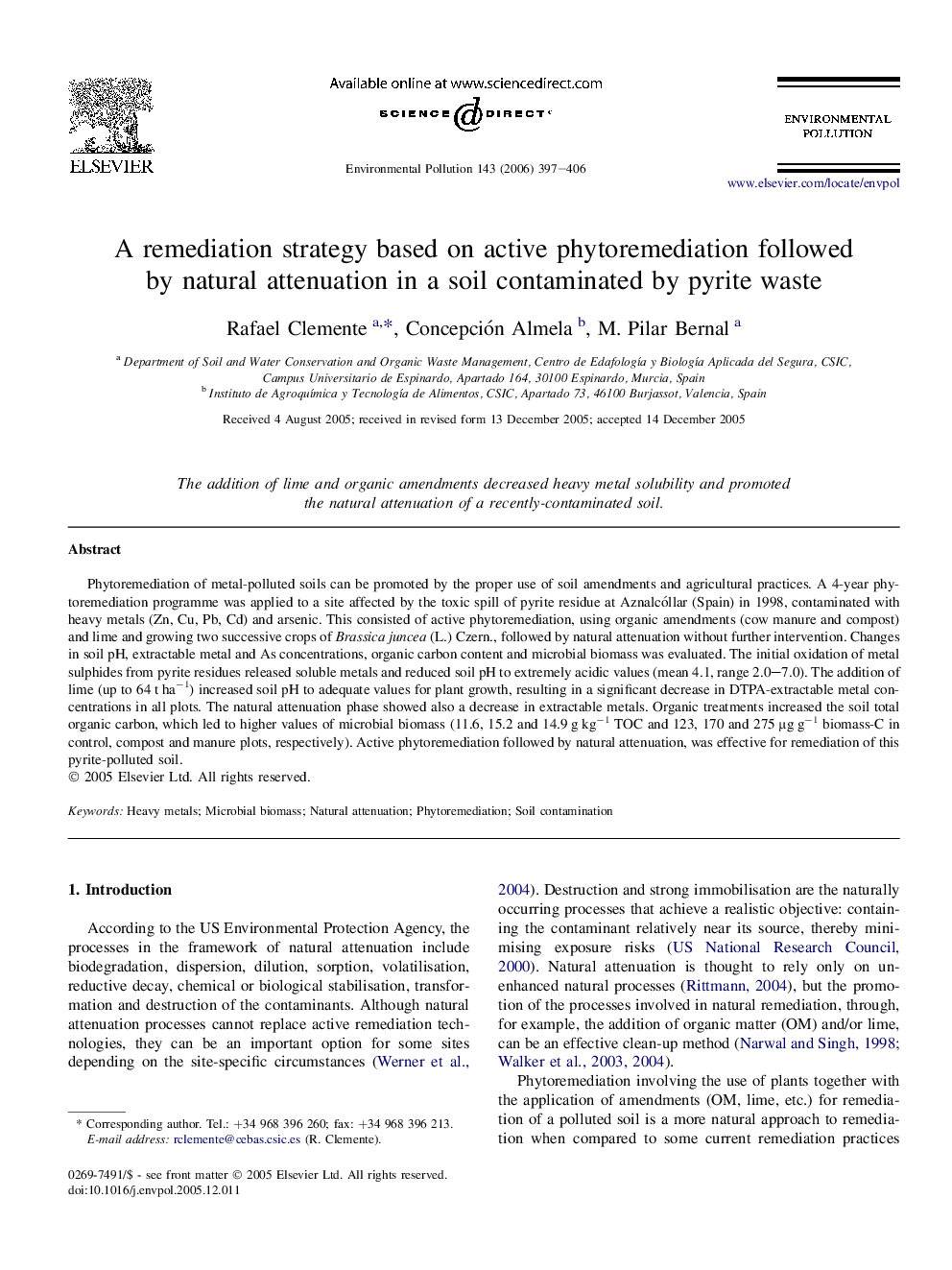| Article ID | Journal | Published Year | Pages | File Type |
|---|---|---|---|---|
| 4427694 | Environmental Pollution | 2006 | 10 Pages |
Phytoremediation of metal-polluted soils can be promoted by the proper use of soil amendments and agricultural practices. A 4-year phytoremediation programme was applied to a site affected by the toxic spill of pyrite residue at Aznalcóllar (Spain) in 1998, contaminated with heavy metals (Zn, Cu, Pb, Cd) and arsenic. This consisted of active phytoremediation, using organic amendments (cow manure and compost) and lime and growing two successive crops of Brassica juncea (L.) Czern., followed by natural attenuation without further intervention. Changes in soil pH, extractable metal and As concentrations, organic carbon content and microbial biomass was evaluated. The initial oxidation of metal sulphides from pyrite residues released soluble metals and reduced soil pH to extremely acidic values (mean 4.1, range 2.0–7.0). The addition of lime (up to 64 t ha−1) increased soil pH to adequate values for plant growth, resulting in a significant decrease in DTPA-extractable metal concentrations in all plots. The natural attenuation phase showed also a decrease in extractable metals. Organic treatments increased the soil total organic carbon, which led to higher values of microbial biomass (11.6, 15.2 and 14.9 g kg−1 TOC and 123, 170 and 275 μg g−1 biomass-C in control, compost and manure plots, respectively). Active phytoremediation followed by natural attenuation, was effective for remediation of this pyrite-polluted soil.
